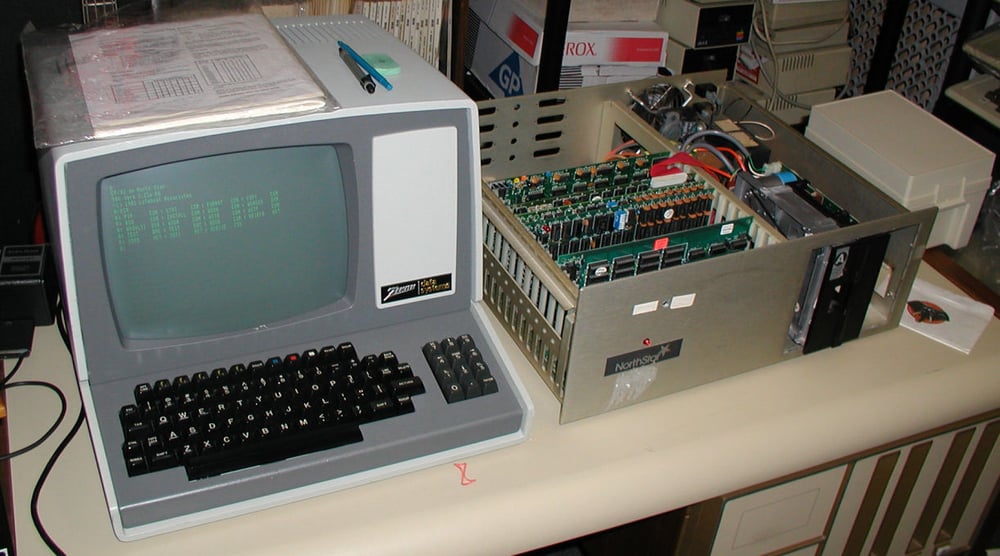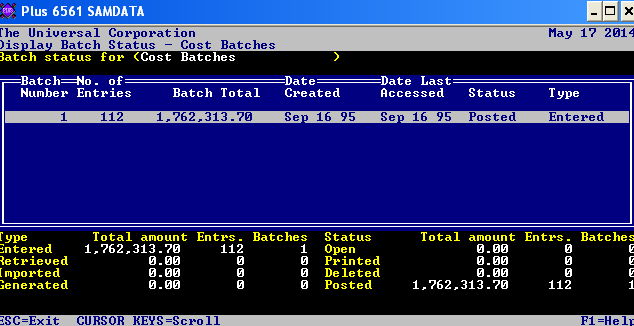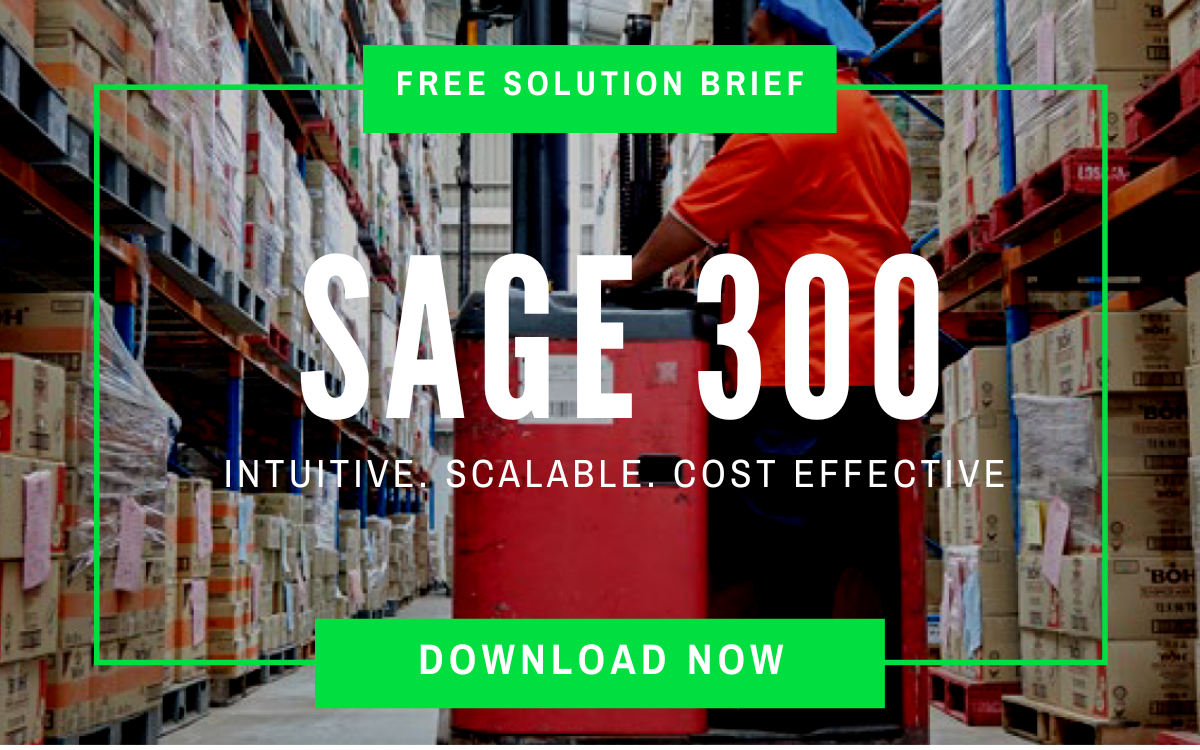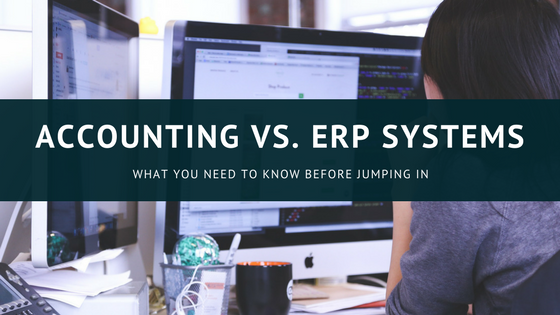If you’re an accountant who’s been around for a while, you’ve probably heard of Accpac (now Sage 300 ERP).
Given its reputation, it mightn’t be amiss to compare it to a Toyota: a reliable workhorse known and trusted by fellow accountants in Singapore and elsewhere.
More than that, Sage 300’s a veteran in the enterprise scene. It debuted in 1976, quite a while before other systems entered the market.
To put that in perspective, that’s when:
- John Lennon visited Singapore for the second time
- Apple Computers was founded
- The first Rocky film starring Sylvester Stallone hit the silver screen
- ‘Hotel California’ by The Eagles was released
In these 43 years, plenty has changed, and not just in the pop culture scene.
For starters, we’re mostly accustomed to thinking about Accpac as “pure” accounting software.
After all, it’s in the name. If you’ve ever wondered:
What Does Accpac Stand For?
The answer: A Complete and Comprehensive Program for Accounting Control.
But while Accpac’s sole focus was accounting way back, today it’s grown to cover other, important back-end operations.
For example, you’ll find that Sage 300 takes care of inventory control, project management, and if you’re in manufacturing, your production planning as well.
Hence the enterprise resource planning (ERP) label, and its rebranding as Sage 300 ERP in 2012.
But that’s been an ultra-compressed overview of Sage 300’s background, which doesn’t fully illustrate its evolution. The rebranding is just one part of the story.
To show you how far it’s come, let’s go back to 1976.
Accpac: A History
Beginnings
Accpac was originally developed for the long-obsolete CP/M operating system. Pictured here is a standard CP/M computer. Source: Vintage Computer Photos
It all started with EasyBusiness Systems, a package of programs covering the basics of accounting: accounts payable and receivable (AP/AR), order entry, and the General Ledger (G/L).
This was part of an office productivity suite which also included a spreadsheet program and word processor – much like an early Microsoft Office.
Canada-based Basic Software Group developed the suite for the then-dominant CP/M operating system. An MS-DOS port followed in 1983, two years after the IBM PC’s debut.
Accpac Plus: The DOS Era
The Accpac Plus experience. Source: PlusCommunity
Two years after being acquired by American firm Computer Associates (CA) in 1985, EasyBusiness Systems was rebranded Accpac Plus.
As the top product in CA’s accounting solutions line aimed at small and medium-sized enterprises (SMEs), Accpac Plus’s modules handled both accounting functionality and other key work processes like inventory control, payroll, and project job costing.
For larger finance teams spread across a whole building, the LanPak local area network (LAN) connector module gave the assurance of a single version of accounting data. More importantly, improved data security and integrity.
Like today’s Sage 300 offering, users had the freedom to implement only the modules they needed.
And as early as 1988, Infoworld magazine noted “the extensive collection of vertical-market, third-party programs that will integrate with Accpac.” One of these programs was Crystal Services’s reporting add-on, now better known as Crystal Reports.
Accpac Plus also offered a “primitive” form of multitasking through the System Windowing Manager, making it easier not just for users to understand where they were in the flow of the system, but to switch easily between modules too.
Sage closed this chapter of Accpac’s history when they retired the product in 2006, long after the DOS era ended.
Bringing the Accpac Advantage to Windows
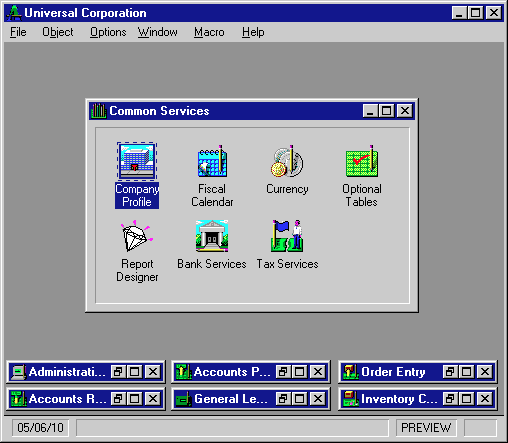
The very first Accpac for Windows, as seen on Windows 3.1. Source: Stephen Smith
Accpac arrived on Windows desktops in 1994, just as the OS was picking up in popularity. Not only would the program be more intuitive to use, there’d now be a lot more flexibility and room for further development.
To start with, the 2001 release of Accpac introduced a new, multi-tiered system architecture, which now allowed for more extensive customisations on top of the previous plug-in approach.
And with growing demand for anytime, anywhere access, key functions like A/P and A/R were also made accessible through web browsers.
Sage acquires Accpac, Now Known as Sage 300 ERP
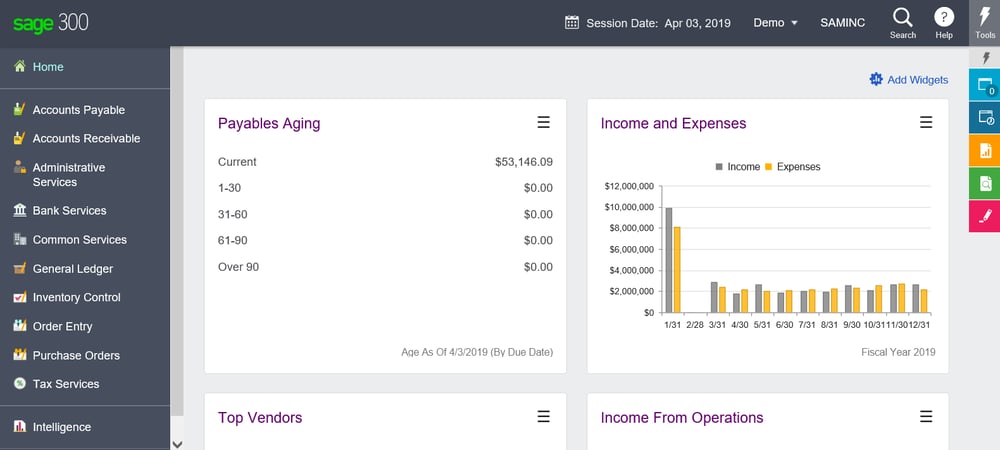
The dashboard web screen of Sage 300cloud.
Product development didn’t stop there. In 2004, the British public-listed software firm Sage – who developed their own accounting software in the 1980s as well – acquired Accpac.
While Accpac had been marketed as financial management software for most of its life, Sage’s first step was to rebrand it Sage Accpac ERP, better reflecting its end-to-end connection of work processes beyond pure accounting and financials.
Finally, in 2012 the Accpac brand was officially retired. The Sage 300 ERP name reflects its positioning as an SME-targeted solution, a step up from Sage 50 accounting software.
Cosmetic changes aside, Sage has continued its gradual approach to going Cloud, without drastically overhauling the system.
In 2016, Sage introduced 300c (now 300cloud), and with it a refreshed series of HTML5-based web screens that complement the classic desktop program.
Better yet, role-centric dashboards are now available online. If you’re a finance manager for example, you can get a view of ageing receivables on the way to the office.
Finally, for businesses interested in reaping the advantages of the Cloud in a private set-up, you can now host Sage 300 on Microsoft Azure.
Sage 300 ERP (formerly Accpac): The Accountant’s Favourite
In summary, though Sage 300 isn’t the most cutting-edge ERP, it’s a proven system that’s been around for a long time. For people who prefer a more gradual approach to technological change, this is an option worth considering
If you’d like to learn more about Sage 300 ERP and how your operations stand to benefit, click on the button below to download your free copy of the Sage 300 solution now.
Alternatively, feel free to give us a call or drop us a message here, and we’ll be in touch.

.png)
